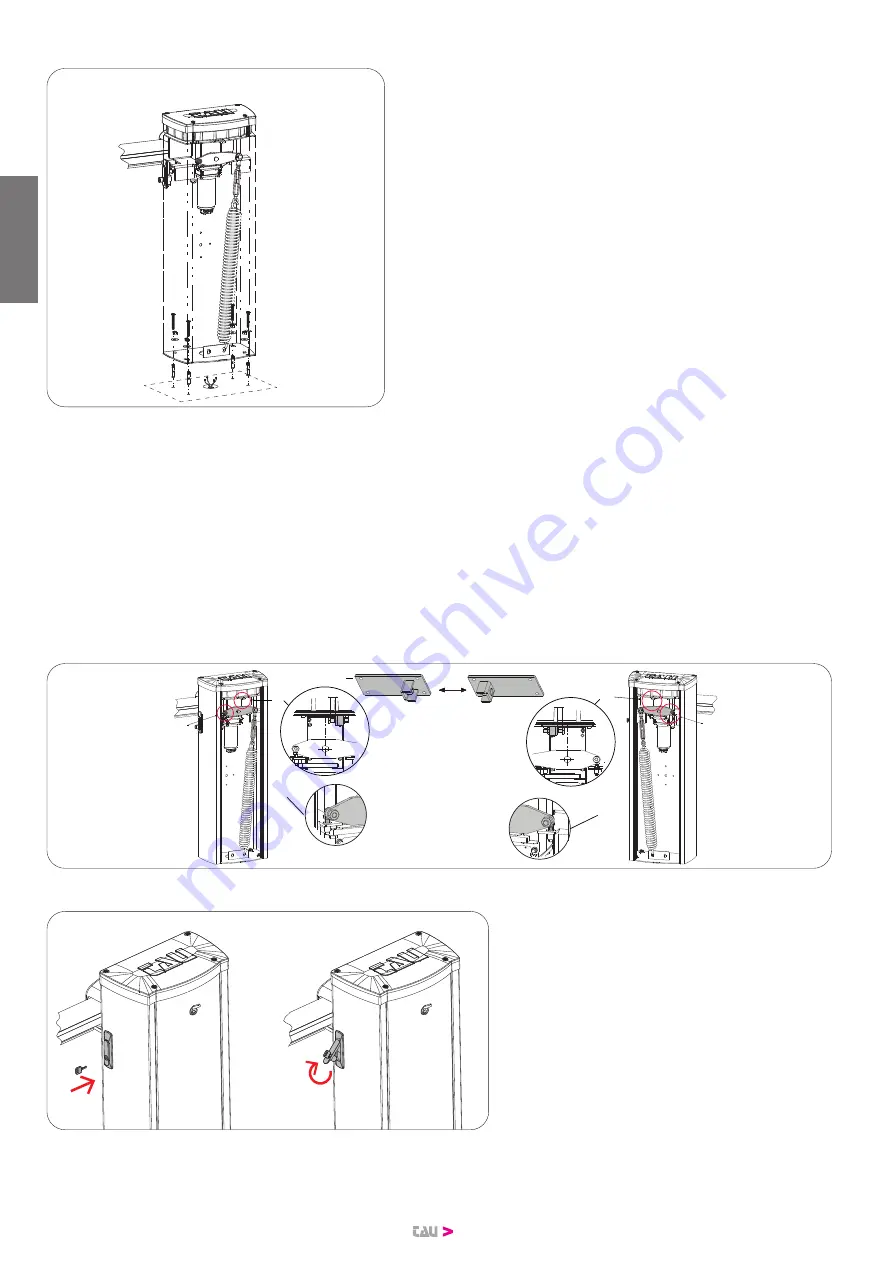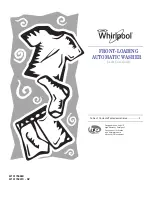
18
6.3 Installation of the barrier group
Fig.5
The barrier is now placed in position, without the bar, and fixed to
the base by securely tightening the nuts to the tie bars (or anchor
bolts). The perfect stability of the anchorage is controlled and if ne
-
cessary, the nuts are tightened further.
6.4 Barrier direction adjustment
Right-hand barriers (RH) are barriers that have the cabinet on the right-hand side viewed from the inside of the passageway (the door is
normally on the inside).
The barrier can be right-hand operating (RH) by fitting the plates as shown in A Fig. 4.
Left-hand barriers (LH) are barriers that have the cabinet on the left-hand side viewed from the inside of the passageway (the door is
normally on the inside).
The barrier can be left-hand operating (LH) by fitting the plates as shown in D Fig. 4.
“LUXE-S” is normally delivered in the RIGHT-HAND (RH) version. If it needs to be transformed to LEFT-HAND (LH), proceed as follows:
1_ after removing the nuts and washers, remove the upper limit switch support, rotate it 180° and fasten it again.
2_ reverse the lever and the spring
3_ Once the direction of the barrier has been changed, the motor connections must be reversed (see instructions K206MA) For LUXE-S,
instructions K101M for LUXE-SE).
Note: once the direction of the barrier has been changed, the position of the devices are inverted.
D1
D1
C1
C2
C2
C1
13
13
D2
D2
6.5 Manual release
1_ Insert the supplied key;
2_ turn the handle approx. 330° clockwise. (if initially it
seems to resist, give the handle greater strength, no
breakage of any kind will be caused).
Always rotate the release handle to the limit before
manually acting on the boom.
Once released, the boom must automatically move
to the equilibrium position (approx. 45°).
ENGLISH































